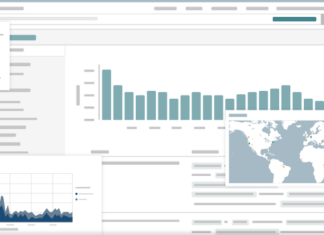
When it comes to cybersecurity, it’s important not to leave any stone unturned. Network protection is the key, and the Web Application Firewall (WAF) is the gatekeeper. Yet surprisingly, not everyone understands its significance. A well-configured WAF can be your first and best line of defense, shielding digital assets from malicious attacks. A poorly configured one, however, can quickly become a liability. In this article, we explore the definition of WAF, outline the security risks of a misconfigured WAF, and provide tips to help you improve your WAF security.
What is a WAF?
A WAF is a firewall specifically created to safeguard web applications. It monitors and filters HTTP traffic between a web application and the internet. Using a set of rules known as policies, a WAF helps protect web applications from threats such as cross-site scripting (XSS), DDoS attacks, and other OWASP top 10 threats.
The benefits of a WAF to an organization are immense. It provides a security layer that can prevent attacks on your web applications, safeguard sensitive data, and maintain the availability of your web services. Furthermore, it can help with regulatory compliance, as many standards and regulations require using a WAF.
The Security Risks of WAF Misconfiguration
Despite significant benefits, a poorly configured WAF is risky. Web application assaults account for 26% of all security breaches, ranking them the second most frequent type of cyber attack. One danger of a poorly configured WAF is overlooked attacks. If your WAF is not correctly configured, it might not recognize specific threats, allowing them to pass through undetected. This can leave your applications and their valuable data vulnerable to attackers.
Another risk of WAF misconfiguration is blocking legitimate traffic. A WAF operates based on predefined rules and policies. If these policies are too broad or too strict, they could block legitimate users from accessing your web applications. This can lead to a loss of business, damage to your reputation, and a poor user experience.
Some other risks of a misconfigured WAF include:
- Incomplete Protection: A misconfigured WAF may provide insufficient protection against cyberattacks. Even though WAFs are designed to block threats such as SQL injection and cross-site scripting, an incorrectly configured system could allow these attacks to slip through, compromising the application’s security.
- False Positives: Incorrect configuration could lead to a large number of false positives, flagging harmless traffic as malicious. This can waste valuable resources as teams investigate these false alarms, diverting attention from genuine threats.
- Performance Impact: A misconfigured WAF can negatively impact the performance of your web application. If the WAF is overzealous in its scanning due to improper configuration, it could slow down the application, leading to a negative user experience.
- Limited Protection: WAFs, especially when not correctly configured, offer little protection against specific attacks. For instance, they might fail to protect against zero-day exploits or advanced persistent threats, exposing the application.
- Complexity: The complex and technical nature of setting up a WAF can lead to misconfiguration. This can make diagnosing and fixing the issues challenging, potentially leading to prolonged periods of vulnerability.
- Costly Errors: Misconfigured WAFs can lead to expensive errors, including data breaches. If an attacker can bypass the WAF due to its misconfiguration, they may gain access to sensitive data, causing financial and reputational damage.
- Bypass Risk: Attackers can bypass a misconfigured WAF, exploiting its weaknesses. Techniques such as nested encodings and incorporating JSON syntax can bypass the rule-based nature of WAFs, leading to successful attacks.
The Security Risks of WAF Misconfiguration
A misconfigured WAF can not only fail to prevent attacks but can also be used as part of an attack. In some cases, attackers can exploit vulnerabilities in the WAF itself to bypass your defenses or even launch attacks against your systems.
Consider the Capital One hack. Here, attackers exploited a misconfigured WAF, causing a data breach of over 100 million accounts. The attacker bypassed the security layer, gaining unauthorized access to sensitive customer information. This wasn’t just a failure of defense but a case where the supposed shield became a tool for the assault.
Such incidents highlight the imperative nature of proper WAF configuration and maintenance. Instead of providing security, a misconfigured WAF can turn into a weak link, making the system vulnerable to attacks. The risks are not just data loss but can extend to severe reputation damage and financial losses. Therefore, it is crucial to keep security measures, like WAF, updated and configured correctly to avoid such potential security risks.
Ensuring WAF Security
So, how can you ensure your WAF is secure and effective? Firstly, consider a WAF that can adapt and grow with your business. The cybersecurity landscape is not static – new threats always emerge, and your WAF should be able to learn from these and adapt its rules accordingly.
The WAF you choose also needs to be continuously monitored and managed. Special administrators should be on hand to tweak configurations to ensure the WAF is secured and can analyze and filter traffic. Furthermore, the type of WAF you use matters. Common choices include network-based, host-based, and cloud-based WAFs, with the latter becoming popular due to its responsiveness and customizability. Cloud-based WAFs also allow security across various applications, including multi-cloud, hybrid-cloud, or on-premises, ensuring protection regardless of deployment method.
To configure your WAF properly, follow these steps:
- Understand your web application: Know what normal traffic looks like so you can spot anomalies.
- Define clear policies: Set rules specific to your application and not overly broad.
- Regularly update and review your rules: Keep up with emerging threats and adjust your policies as needed.
- Monitor and analyze traffic: Look for patterns that could indicate an attack.
- Test your WAF: Regularly test your WAF to ensure it is working correctly and effectively.
In conclusion, a well-configured WAF is critical for your cybersecurity. It can protect your web applications from threats, safeguard sensitive data, and help with regulatory compliance. However, a poorly configured WAF can present risks, from overlooked attacks to blocking legitimate traffic.
Remember, your WAF is only as good as its configuration. Ensure you understand your web application, define clear policies, regularly review your rules, monitor traffic, and periodically test your WAF. By doing so, you can ensure your WAF effectively protects your web applications and business.








